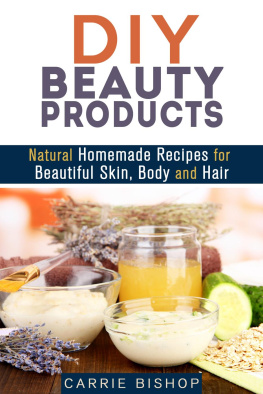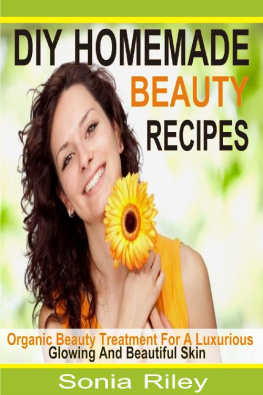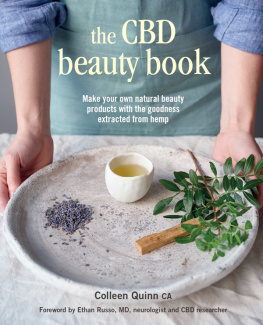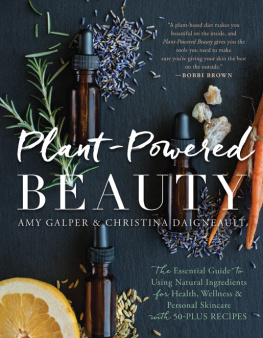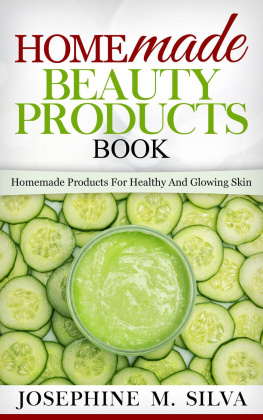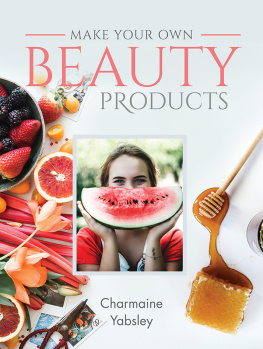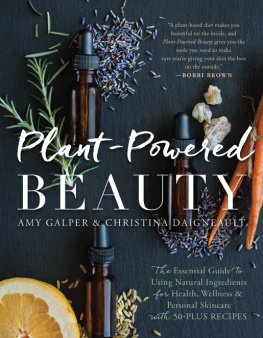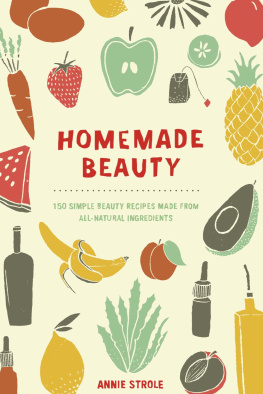DIY Beauty Products
Natural Homemade Recipes for Beautiful Skin, Body and Hair
Copyright Notice
Reproduction, duplication, transmission of this document in part or in whole is permitted only with written permission from the publisher. All rights reserved.
Respective brands and trademarks mentioned in this book belong to their respective owners.
Disclaimer
This document is geared towards providing summarization of information related to the topic. While all attempts have been made to verify the accuracy of the information, the author does not assume any responsibility for errors, omissions, or interpretations of the content. The information is offered for informational or entertainment purposes only. If professional advice is necessary, a qualified legal, medical, financial or another respective professional should be consulted. The reader is responsible for his or her own actions. The publisher does not accept any responsibility or liability arising from damages or losses, real or perceived, direct or indirect, resulting from the use of this information.
Table of Contents
Introduction
M ost of us dream of having the perfect skin and glowing hair. But as we get older, fine lines and wrinkles forces us to go to the drugstore to buy expensive lotions and potions to find the Holy Grail of beauty products to erase them. We end up spending a lot of money buying expensive products, and in the end the results are not what we expected it would be.
By making our own products, we can avoid harsh chemicals usually present in these expensive products and include fresh ingredients already sitting on the shelf in your pantry or fridge. It also provides you with the safest and most personalized products possible, because only you know your skin type best.
Making beauty products at home is very frugal and it will save you lots of money. It costs much less and it lasts longer than store-bought products. Homemade items also make the ideal gifts as they are more personal and practical containing way less toxins and harmful substances than cosmetic ingredients that you buy at a much higher price. Can we really trust the cosmetic industry to use only ingredients that are good for our long term health?
In this book you will be introduced to the Dos and Donts of DIY products, some useful tips and handy recipes.
Enjoy reading!!
Chapter One: DIY Facial Moisturizers
I n this chapter, you will learn:
- Key ingredients of a basic facial moisturizer
- Recipes for facial moisturizers
Key Ingredients of a Basic Facial Moisturizer
D IY facial moisturizers should be clean and healthy - always try to keep in mind that one should keep the environment as well as our bodies clean. One should always try to avoid adding perfume to our homemade products, as it may cause an allergic reaction. Butters, oils and waxes are usually the base of any DIY facial moisturizer.
Butters, like mango butter, cocoa butter, avocado butter and shea butter are plant based fatty oils. They are naturally derived with no additives and they offer extra protection since they are not as easily absorbed as semi-fatty oils.
Oils, on the other hand, like olive oil, coconut oil, sesame oil, castor oil, sunflower oil, apricot kernel oil and avocado oil must be organic to ensure no chemicals were used during the extraction process. Semi-fatty oils are absorbed by the skin a lot easier than butters, so the amount of residue will vary from one person to another. They contain essential fatty acids, vitamin E, vitamins and minerals which provide nutrition to hair follicles.
Waxes include beeswax and jojoba. Jojoba is usually purchased as oil, but, technically, it is a wax. It contains myristic acid that is similar to the composition of human skin. Jojoba has the ability to trap water inside the skin without clogging pores, so it is an excellent moisturizer for acne sufferers or people who suffer from inflamed skin conditions. Beeswax, which is not absorbed by the skin, creates a nice layer of protection. It is usually heated and often used in combination with oils and butters.
Why should your daily moisturizer contain vitamins? Many people prefer to mix their own moisturizers by using all organic ingredients like real plant oils, herbs and natural extracts that helps skin cells to regenerate. They also have protective properties to ward off sun damage and to protect the skin from harmful environmental pollution
One should keep ones skin type in mind when starting to mix any DIY beauty product. If you have very dry skin, you want a product that contains more emollients and hydrating ingredients. Oily skin, on the other hand, needs ingredients that absorb excess oil.
Good ingredients to add should include organic aloe vera gel, herbs and shea butter. A good organic moisturizer should contain skin enhancing vitamins and antioxidants like Vitamin C, Vitamin E and green tea extract. These ingredients will nourish and protect your skin, hydrate pores and help the skin look more youthful.
If you have a scaly and dry skin, Vitamin A is the answer. This vitamin helps the skin rebuild tissues and it is great for healing scrapes, wounds and other damages to the skin. Vitamin A is a great anti-aging nutrient which keeps lines, wrinkles, dull skin and other aging skin symptoms at bay.
Vitamin E are known for its skin benefits, because it is an extremely effective antioxidant that helps fight free radicals. Things like smoking, pollution and sun exposure cause these free radicals and this is one of the main causes of aging skin Vitamin E can therefore act as an important anti-aging nutrient. The appearance of age spots, wrinkles, stretch marks and lines are reduced by adding Vitamin E rich products to your DIY moisturizer.
When applied topically, Vitamin C is a 20 times stronger antioxidant than when taken orally. This vitamin stimulates the production of collagen in your skin and your skin will feel much suppler.
Recipes for Facial Moisturizers
B asic Coconut Moisturizer
Ingredients:
250 ml almond or olive oil
125 ml coconut oil
125 ml beeswax
Optional: 1 teaspoon Vit E oil; 2 tablespoons Shea butter or cocoa butter; essential oils; vanilla extract or other natural extracts that you prefer to use.
Directions:
Combine the ingredients in a pint sized jar.
Fill a saucepan with water. Place the saucepan over medium heat.
Put a lid on the jar and place the pan in the water.
The ingredients will melt as the water starts to heat. Stir occasionally until everything is melted. Pour into a jar or tin for storage.
This has a longer shelf life than some homemade lotion recipes since the ingredients are shelf stable and no water is added.
Remember: a little goes a long way!
Whipped Shea Butter Moisturizer
Ingredients:
12 tablespoons Shea butter
4 tablespoons plant oil, like coconut oil, jojoba oil and plum kernel oil
5-10 drops essential oil, like chamomile, carrot seed or lavender
Remember: Shea butter is a little grainy, but it dissipates as soon as it is applied to the skin.
Directions:
Place shea butter and oil combination in a mixing bowl.
Begin the whipping process until you have achieved the desired consistency.
Add essential oil and put it in a container.
Why is Shea butter so good for your skin? Shea butter is known for its moisturizing, anti-aging, regenerating and protecting properties. It protects your skin from various harmful elements in nature, like sunlight, harsh climates, dehydration and pollution. Shea butter strengthens your skin by stimulating the production of collagen - the youthful protein in your skin. It makes your skin look more alive, feel more supple, radiant and alive. Shea butter will make wrinkles, fine lines and crow feet disappear.

